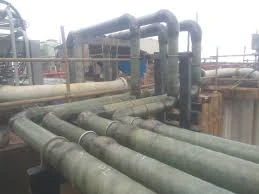
-
 Afrikaans
Afrikaans -
 Albanian
Albanian -
 Amharic
Amharic -
 Arabic
Arabic -
 Armenian
Armenian -
 Azerbaijani
Azerbaijani -
 Basque
Basque -
 Belarusian
Belarusian -
 Bengali
Bengali -
 Bosnian
Bosnian -
 Bulgarian
Bulgarian -
 Catalan
Catalan -
 Cebuano
Cebuano -
 China
China -
 China (Taiwan)
China (Taiwan) -
 Corsican
Corsican -
 Croatian
Croatian -
 Czech
Czech -
 Danish
Danish -
 Dutch
Dutch -
 English
English -
 Esperanto
Esperanto -
 Estonian
Estonian -
 Finnish
Finnish -
 French
French -
 Frisian
Frisian -
 Galician
Galician -
 Georgian
Georgian -
 German
German -
 Greek
Greek -
 Gujarati
Gujarati -
 Haitian Creole
Haitian Creole -
 hausa
hausa -
 hawaiian
hawaiian -
 Hebrew
Hebrew -
 Hindi
Hindi -
 Miao
Miao -
 Hungarian
Hungarian -
 Icelandic
Icelandic -
 igbo
igbo -
 Indonesian
Indonesian -
 irish
irish -
 Italian
Italian -
 Japanese
Japanese -
 Javanese
Javanese -
 Kannada
Kannada -
 kazakh
kazakh -
 Khmer
Khmer -
 Rwandese
Rwandese -
 Korean
Korean -
 Kurdish
Kurdish -
 Kyrgyz
Kyrgyz -
 Lao
Lao -
 Latin
Latin -
 Latvian
Latvian -
 Lithuanian
Lithuanian -
 Luxembourgish
Luxembourgish -
 Macedonian
Macedonian -
 Malgashi
Malgashi -
 Malay
Malay -
 Malayalam
Malayalam -
 Maltese
Maltese -
 Maori
Maori -
 Marathi
Marathi -
 Mongolian
Mongolian -
 Myanmar
Myanmar -
 Nepali
Nepali -
 Norwegian
Norwegian -
 Norwegian
Norwegian -
 Occitan
Occitan -
 Pashto
Pashto -
 Persian
Persian -
 Polish
Polish -
 Portuguese
Portuguese -
 Punjabi
Punjabi -
 Romanian
Romanian -
 Russian
Russian -
 Samoan
Samoan -
 Scottish Gaelic
Scottish Gaelic -
 Serbian
Serbian -
 Sesotho
Sesotho -
 Shona
Shona -
 Sindhi
Sindhi -
 Sinhala
Sinhala -
 Slovak
Slovak -
 Slovenian
Slovenian -
 Somali
Somali -
 Spanish
Spanish -
 Sundanese
Sundanese -
 Swahili
Swahili -
 Swedish
Swedish -
 Tagalog
Tagalog -
 Tajik
Tajik -
 Tamil
Tamil -
 Tatar
Tatar -
 Telugu
Telugu -
 Thai
Thai -
 Turkish
Turkish -
 Turkmen
Turkmen -
 Ukrainian
Ukrainian -
 Urdu
Urdu -
 Uighur
Uighur -
 Uzbek
Uzbek -
 Vietnamese
Vietnamese -
 Welsh
Welsh -
 Bantu
Bantu -
 Yiddish
Yiddish -
 Yoruba
Yoruba -
 Zulu
Zulu
drill rod connections understanding the basics and its ...
Understanding the Basics of Drill Rod Connections
Drill rod connections play a crucial role in drilling operations, especially in various industries like mining, oil and gas, and construction. Understanding the basics of these connections is essential for enhancing efficiency, safety, and reliability in the drilling process. In this article, we will explore the different types of drill rod connections, their significance, and best practices for their use.
Types of Drill Rod Connections
Drill rod connections are designed to link segments of drill rods together, allowing for continuous drilling. The most common types of connections include
1. Threaded Connections This traditional method involves threading the ends of the drill rods to create a secure bond. Threaded connections are commonly used due to their simplicity and effectiveness. However, they require careful alignment and can be prone to wear and tear over time, necessitating regular inspection and maintenance.
2. Tapered Connections These connections feature a tapered design that provides a snug fit when joining drill rods. Tapered connections are often preferred for their ability to resist vibration and reduce the likelihood of loosening during drilling operations.
3. Quick Connect/Disconnect Systems These modern connections allow for rapid assembly and disassembly of drill rods. They are particularly valuable in situations where time is of the essence, such as in exploration drilling or geotechnical investigations. Quick connect systems can significantly minimize downtime, enhancing overall productivity.
4. Welded Connections In some industrial applications, drill rods may be welded together for added strength and stability. While this method offers robustness, it can complicate the repair process, as it requires cutting and re-welding if a section of the rod is damaged.
Importance of Proper Connection
The integrity of drill rod connections directly impacts the overall performance of drilling operations. A secure connection ensures that the drill bit transmits torque and weight effectively, leading to optimal drilling rates and reduced wear on equipment. Conversely, loose connections can lead to “back-outs,” where the drill rods become disengaged during drilling, resulting in downtime and potentially hazardous situations.
drill rod connections understanding the basics and its ...

Furthermore, proper connections help maintain the alignment of drill rods, which is crucial for achieving accurate drilling trajectories. Misalignment can cause difficulties in reaching the intended depth or target, compromising the success of the drilling operation.
Best Practices for Drill Rod Connections
To maximize the efficiency and safety of drill rod connections, consider the following best practices
1. Regular Inspection Routine inspections of connections are vital for identifying wear and tear before they result in failures. Look for signs of thread damage, corrosion, or any other issues that might compromise the integrity of the connection.
2. Proper Lubrication Applying appropriate lubricant to threaded connections can help reduce friction during assembly and disassembly, preventing damage to the threads and ensuring smoother operation.
3. Training and Certification Ensure that personnel involved in connecting and disconnecting drill rods are adequately trained and certified. They should be familiar with the different types of connections and the specific requirements for each, minimizing the risk of improper handling.
4. Use Quality Equipment Investing in high-quality drill rods and connectors can enhance the durability and performance of the connections. While it may be tempting to opt for cheaper alternatives, the long-term benefits of quality equipment far outweigh the initial savings.
5. Follow Manufacturer Recommendations Always adhere to the manufacturer’s guidelines regarding connection specifications, torque settings, and maintenance schedules. This ensures that you are using the equipment as intended and reduces the risk of premature failure.
Conclusion
Drill rod connections are a fundamental aspect of successful drilling operations. Understanding the types of connections, their importance, and best practices can help ensure that drilling processes are efficient, safe, and reliable. By prioritizing proper connection techniques and equipment maintenance, operators can minimize downtime, enhance productivity, and achieve their drilling objectives more effectively.









